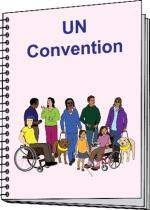
Introduction: a human rights approach
Over 80 years ago, the Universal Declaration of Human Rights aimed to cover all areas of life, giving people around the world basic rights that can't be taken away. These include the rights to education, to live independently, to safety, and many more.
However, Disabled people have long been denied many of these rights due to societal barriers. The Social Model of Disability, developed by Disabled people in the 1970s and 1980s, provided a framework for understanding these barriers and advocating for change.
Building on this foundation, the UN Convention on the Rights of People with Disabilities (UNCRPD) was created in 2006. The UNCRPD incorporates the principles of the social model into an international human rights framework, focusing on specific issues Disabled people face.
Understanding the Social Model of Disability
The Social Model of Disability is a way of viewing the world developed by Disabled people. It helps us understand how to remove barriers and create a more inclusive society.
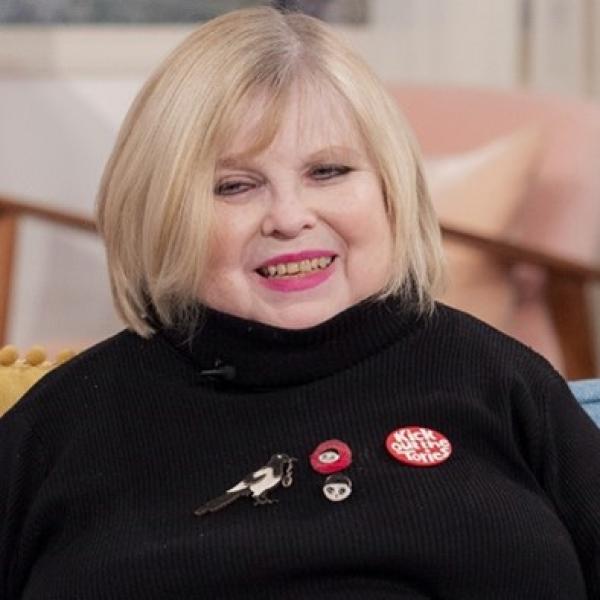
As described by Barbara Lisicki (2013):
"The social model shows how disability is something that is made by society. People are disabled by a number of barriers. These are barriers in the way things are organised or planned and they are barriers that stop people from getting around. There are also barriers that are put up because of the way that people think about disability. We can change and get rid of these barriers."
The social model vs. the medical model
To understand the social model better, it's helpful to contrast it with the medical model
Medical model |
Social model |
|---|---|
People disabled by their impairments |
People disabled by social & environmental factors |
Focus on cure |
Focus on removing disabling social & environmental factors |
Charity-based approach |
Rights-based approach |
Views Disabled people as tragic and brave |
Views Disabled people as different, not lesser |
The medical model sees people's impairments as the disabling factors. This has created a system where Disabled people are often seen as passive receivers of services, judged only by what help they need. They aren't seen as active members of society with the right to fulfilling, independent lives.
The social model, on the other hand, recognises that it's the barriers in society that disable people, not their impairments. This shift in perspective opens up many more possibilities for positive change.
Have a look at the diagrams below to understand the vast differences between the two models, and the many implications of adopting one or the other view, for the Disabled individual, for service providers such as the council, and for the society as a whole.
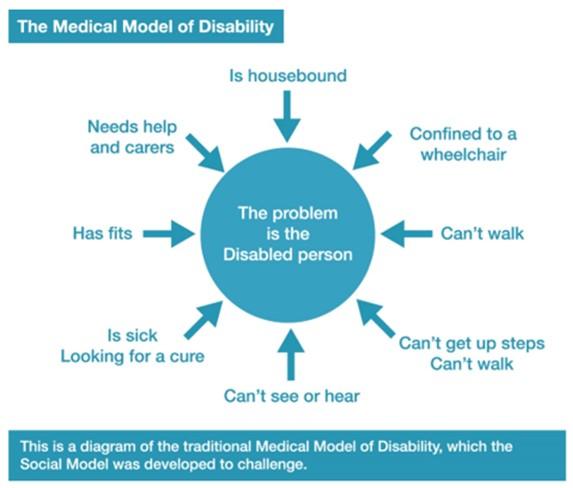
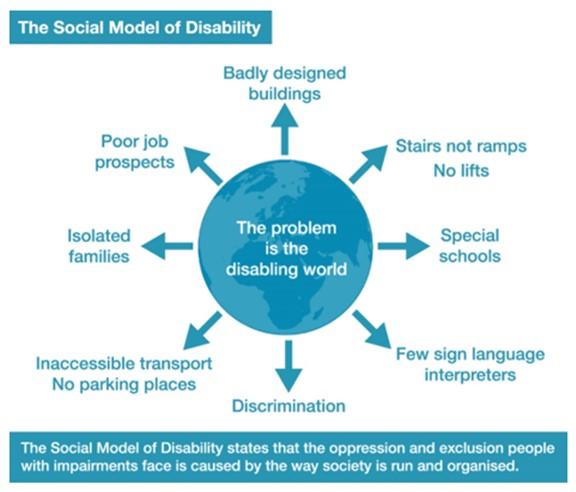
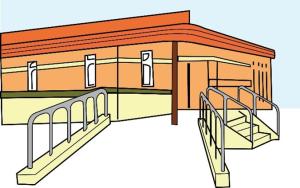
Examples of the social model in action
1. A wheelchair user wants to enter a building with a step at the entrance. Adding a ramp removes this barrier.
2. A child with a visual impairment wants to read a best-selling book and discuss it with friends. Providing full-text audio recordings enables equal participation.
3. A teenager with learning difficulties wants to live independently but is unsure how to pay rent. With the right support, they can live the life they choose rather than being expected to live in a care home.

Applying the social model in co-production
As a member of a co-production group, you play a key role in spotting barriers and co-producing solutions. When making choices, always ask yourself: "Does this remove barriers for Disabled people?"
Remember, your lived experience as a local resident makes you the expert in the room. If you're not sure about something or think policies need explaining more clearly, don't hesitate to speak up!
By applying the social model in our co-production work, we can create more inclusive policies, services, and environments that benefit everyone in our community.
As part of the council's commitment to co-production with residents, it is also committed to transforming services, taking an Independent Living approach, to ensure that residents have greater choice and control in their lives. This is particularly the case for Disabled residents who may require additional support to live in their own homes in the community.